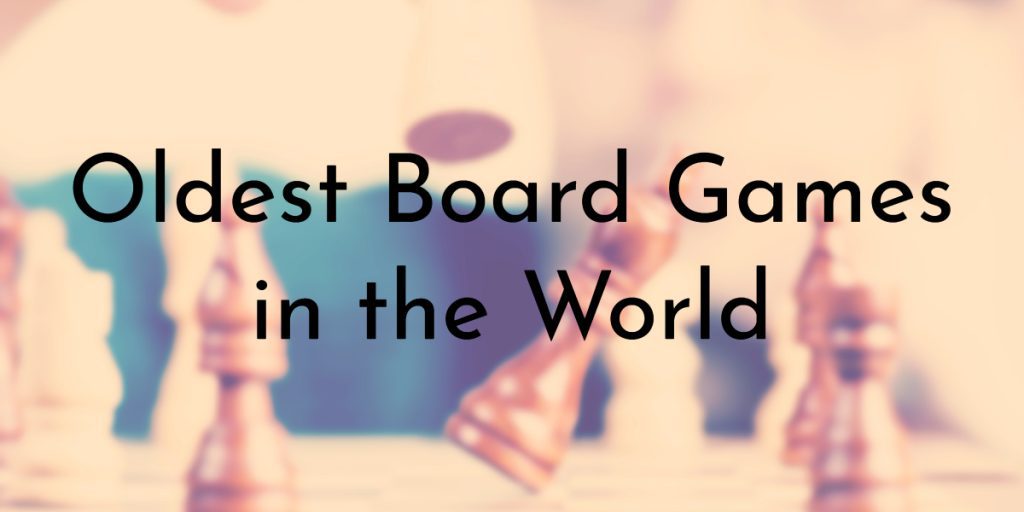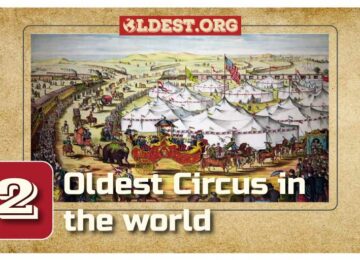People have been playing games in some form since the earliest civilizations first arose over 5,000 years ago. Nearly all of the games on this list were played by the first civilizations such as the Ancient Sumerians (from Mesopotamia) and Ancient Egyptians.
Although the exact rules of these ancient games have been lost, historians have been able to piece together and reconstruct gameplay so people can play them today.
8. Chess
Date Created: c.600 AD
Country of Origin: India, possibly China
Still Played Today: Yes
Number of Players: 2
Other Names: Varies by country
 photo source: Wikimedia Commons
photo source: Wikimedia Commons
Although most people probably that Chess is an ancient game, compared to all the other board games on this list, it is relatively young. While the exact origins of Chess are unknown, most historians agree that the game originated in India during the Gupta Empire around the 6th century AD — some historians believe it originated in China.
The early form of the game from India was called chaturanga, which featured “four divisions of the military”: infantry, cavalry, elephantry, and chariotry — these game pieces eventually evolved into the modern-day pawn, knight, bishop, and rook, respectively.
Like many early games, the rules of Chess evolved as it spread throughout the world, and the modern rules of the game were formed around the 15th century in Europe.
7. Nine Men’s Morris
Date Created: Unknown, possibly c.1400 BCE
Country of Origin: Unknown, possibly Ancient Egypt
Still Played Today: Yes
Number of Players: 2
Other Names: Nine Man Morris, Mills, The Mill Game, Merels or Merrills, Cowboy Checkers
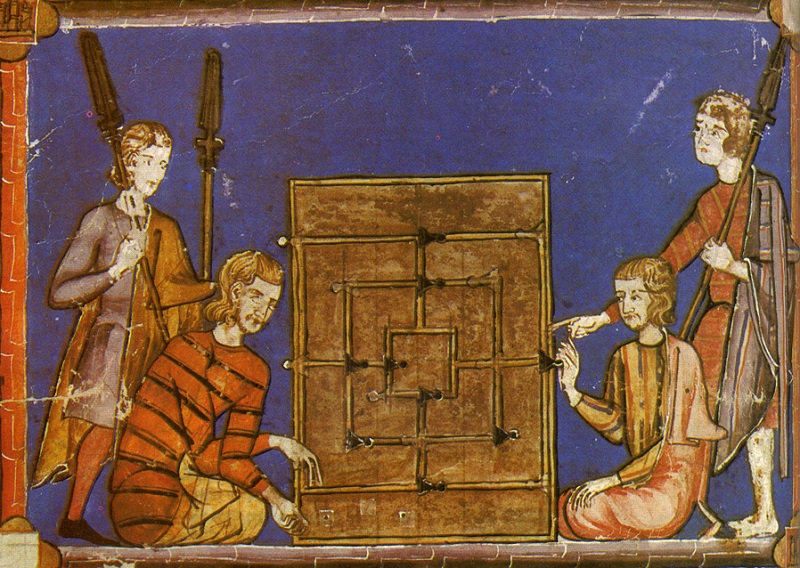 photo source: Wikimedia Commons
photo source: Wikimedia Commons
The game of Nine Men’s Morris is so old that no one knows for sure when and where exactly the game originated. One of the earliest known boards for the game was found “cut onto the roofing slabs of the temple at Kurna in Egypt” dating to around 1400 BCE. However, there is some disagreement over the age of the temple’s slabs.
The game was popular in Ancient Rome as there are many boards carved into Roman buildings, but boards are hard to date due to the buildings’ exposure. Nine Men’s Morris spread across Europe and was a popular game among priests and monks.
Nine Men’s Morris is still widely played today and its rules have not changed much since they were first recorded.
6. Go
Date Created: c.2000 BCE
Country of Origin: Ancient China
Still Played Today: Yes
Number of Players: 2
Other Names: Weiqi, Igo, Paduk, Baduk
 photo source: Wikimedia Commons
photo source: Wikimedia Commons
Go, known as Weiqi in its country of origin China, is one of the oldest board games in the world that is still largely popular today. Although the games exact origins are unknown, Go is believed to have originated in China sometime around 3,000 – 4,000 years ago.
In place of an exact history, according to legend, Go was created by the ancient Chinese Emperor Yao (2356–2255 BCE) to enlighten his son, Danzhu and teach him discipline, concentration, and balance.
The popularity of Go grew throughout other East Asian countries, especially Japan (which is where the name Go comes from), where the most significant advances in the game’s play were made during the 1670s.
5. Royal Game of Ur
Date Created: c. 2600 – 2400 BCE
Country of Origin: Ancient Mesopotamia (modern-day Iraq)
Still Played Today: Yes
Number of Players: 2
Other Names: Game of Twenty Squares or Asseb
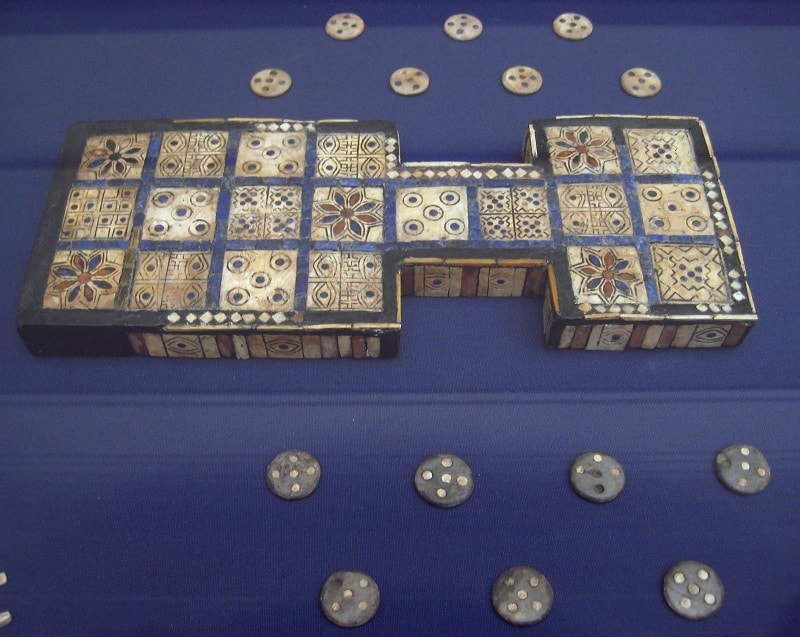 photo source: Wikimedia Commons
photo source: Wikimedia Commons
The Royal Game of Ur, which was played in Ancient Mesopotamia (modern-day Iraq) is one of civilization’s earliest board games. Two gameboards were found by British archaeologist Sir Charles Leonard Woolley in 1920 while he was excavating the Royal Tombs of Ur – the boards were dated to around 2600 BCE.
Other similar boards of 20 squares have been found at other ancient sites in Egypt, such as Tutankhamen’s tomb, and India.
Historians were able to reconstruct the games rules based on a partial cuneiform tablet from Babylon dating from 177 – 176 BCE. With these rules, modern versions of the game have been released and the game can even be played online at the British Museum’s Mesopotamia website.
4. Mehen
Date Created: c.2700 BCE
Country of Origin: Ancient Egypt
Still Played Today: No
Number of Players: 2 – 6
Other Names: None
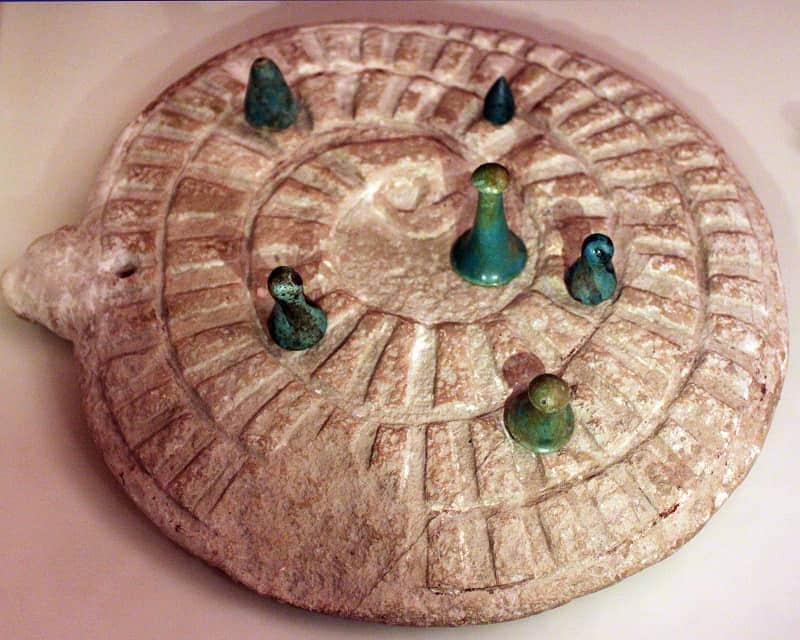 photo source: Wikimedia Commons
photo source: Wikimedia Commons
Mehen is another board game from Ancient Egypt and it is believed to be the earliest example of a multi-player board game. Evidence of the game dates back to the Predynastic Period through the end of the Old Kingdom — a Mehen gameboard was found in King Peribsen’s tomb, dating back to 2770 – 2650 BCE.
The game is named for Mehen, a snake-god, and the gameboard is shaped like a coiled snake.
The pieces come in two types: small spheres similar to marbles and ivory pieces in the shapes of lions and lionesses. Mehen’s exact rules and gameplay are unknown, but historians believe that up to six people were able to play the game.
3. Backgammon
Date Created: c.3000 BCE
Country of Origin: Ancient Perisa (modern-day Iran)
Still Played Today: Yes
Number of Players: 2
Other Names: Nard, Gul Bara, Tapa
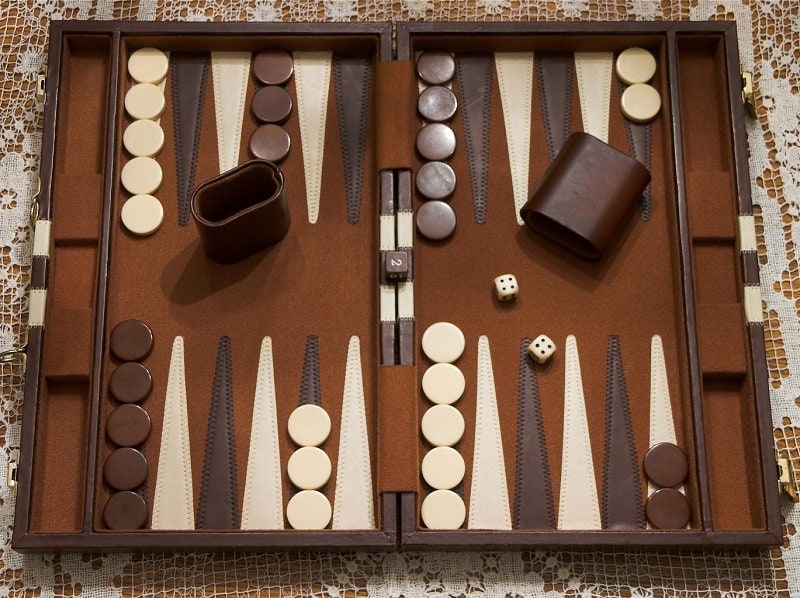 photo source: Wikimedia Commons
photo source: Wikimedia Commons
Backgammon is another ancient game that is even older than Chess.
In 2004, archaeologists discovered a gameboard in the ancient city of Shahr-e Sukhteh in Iran resembling the game of Backgammon. The board was dated to around 3000 BCE and is believed to be the oldest Backgammon board ever found. It is made of ebony and features sixty markers made of turquoise and agate, as well as a pair of dice.
The game’s rules changed as it was played in different countries and the oldest game with rules almost identical to modern Backgammon was called “tabula” from the Byzantine Empire in Greece dating back to around 480 AD.
2. Checkers
Date Created: c.3000 BCE
Country of Origin: Ancient Mesopotamia (modern-day Iraq)
Still Played Today: Yes
Number of Players: 2
Other Names: Draughts (British English pronounced “drafts”)
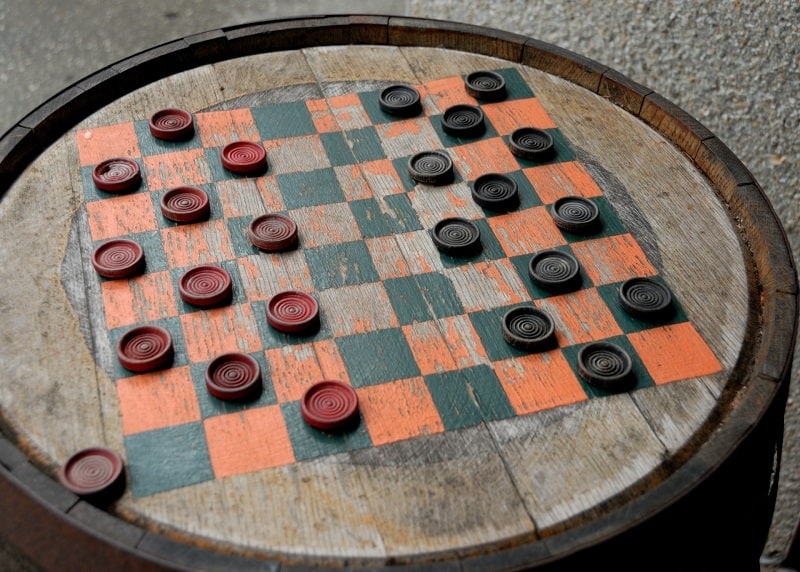 photo source: publicdomainpictures.net
photo source: publicdomainpictures.net
Checkers also called Draughts is one of the oldest board games in the world that is still played today.
The origins of the game can be traced back to the ancient city of Ur in southern Mesopotamia (modern-day Iraq), dating back to about 3000 BCE. A game board resembling Checkers with slight variations was carbon dated to this time period.
Over the years, the game evolved as it was introduced to other countries and today, the most popular forms of Checkers are English draughts/American checkers and Russian draughts.
The game has remained popular all around the world and the first World Championship in International draughts began in 1885 and took place in France.
1. Senet
Date Created: c.3500 BCE
Country of Origin: Ancient Egypt
Still Played Today: Yes
Number of Players: 2
Other Names: Senat or Sen’t
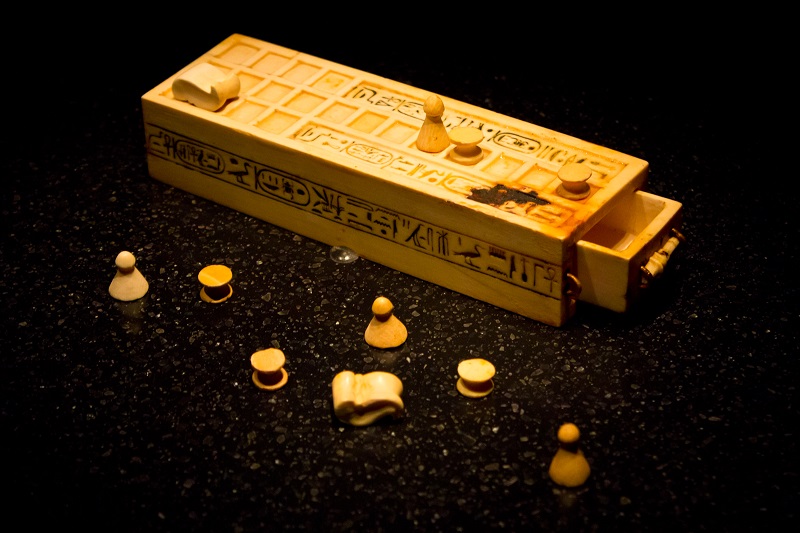 photo source: Wikimedia Commons
photo source: Wikimedia Commons
According to TopPCGamer, Senet is the oldest known board game in the world. It was played in Ancient Egypt, and game boards have been found in Predynastic and First Dynasty burials dating as far back as 3500 BCE.
The game’s boards were rectangular slabs made of wood, limestone, or faience (ceramic earthenware made from ground quartz and coated with a brightly colored glaze and featured carved squares and symbols.
Although historians aren’t quite sure how exactly the game was played, Timothy Kendall and R.C. Bell have made their own reconstructions of the game. Kendall and Bell’s rules are based on pieces of texts mentioning Senet and these rules have been adopted by modern senet players.
OTHER POSTS YOU MAY BE INTERESTED IN


